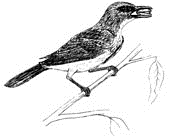Vertebrate Pest Conference: Proceedings

Vertebrate Pest Conference Proceedings: 17th (1996)
Date of this Version
1996
Document Type
Article
Citation
Published in Proceedings: Seventeenth Vertebrate Pest Conference … 1996, ed. Robert M. Timm & A. Charles Crabb (University of California, Davis, 1996).
Abstract
Although Talon® baits containing brodifacoum have been used successfully in eradicating rats from some of New Zealand's offshore islands, little is known about any environmental effects of this toxin. Invertebrates, blackbirds, soil, and water at intervals of two days to nine months were sampled to determine whether brodifacoum residues were present after aerial distribution of Talon® 20P cereal pellets on Red Mercury Island and after bait-station use of Talon® 50WB wax-coated cereal blocks on Coppermine Island. No brodifacoum residues were found in soil, water, or most (99 %) invertebrate samples. Low concentrations (0.12 /μg/g) were found in one sample of slugs collected two days after aerial sowing. Liver tissues from all birds (n=4) and rats (n=3) found dead, and from all six birds collected alive eight months after aerial baiting, also contained low-to-moderate concentrations of brodifacoum (0.004 to 11.0 /ig/g). These preliminary results suggest that invertebrates are not likely to accumulate brodifacoum as a result of Talon® baiting. Laboratory studies showed that, although some invertebrates may eat Talon® baits, it appears that the brodifacoum is metabolized and/or excreted within a few days. The dead blackbirds found were, therefore, more likely to have been killed by primary rather than by secondary poisoning. Further monitoring for brodifacoum residues after Talon® operations should be undertaken to confirm that contamination of invertebrates, soil, and water is unlikely. Some bird species may be at risk from eating Talon® baits. Likely effects on population levels of such species should be assessed to help weigh the risk and benefits of Talon® use in rodent eradication.
Included in
Animal Sciences Commons, Bioresource and Agricultural Engineering Commons, Environmental Engineering Commons


Comments
Copyright © 1996 (where applicable) by the Vertebrate Pest Council of the Vertebrate Pest Conference. Used by permission.